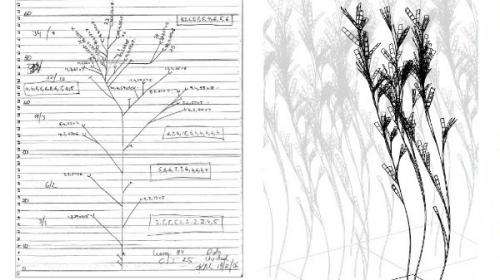3-D seagrass model shines leaf-level light on photosynthesis

West Australian scientists have developed a three-dimensional computer model of seagrass canopies to investigate the effect of canopy structure and reduced light on photosynthesis.
The study found canopy density affects how seagrass meadows will respond to reduced light conditions, caused by a combination of self-shading and suspended sediments introduced during infrastructure development and dredging.
Co-author and Edith Cowan University research fellow Dr Kathryn McMahon says the study aimed to see if it was possible to build a seagrass canopy model for a complex seagrass like Amphibolis griffithii, found in the south of West Australia.
The new model accounts for variables including wave action, stem and branch length, the underwater motion of leaves, their position in the layered canopy, and their changing exposure to sunlight.
"Once we had built the model, and validated it…we wanted to run it under different conditions, to investigate if this would be a useful tool to improve the impact prediction and monitoring of light reduction events," Dr McMahon says.
"We wanted to understand how long seagrasses could survive for with reduced light, and what times of the year they were most resilient to dredging-related stressors, such as light reduction."
The model revealed the relationship between light levels, canopy density and canopy-scale photosynthesis is complex and non-linear.
Leaf-scale effects add up
Co-author and Environmental Computer Science Ltd director Dr John Hedley says further studies should consider the effect of canopy structure and density on photosynthesis, and these effects should be considered when assessing, predicting and monitoring impacts from coastal developments.
"To understand the amount of light required for photosynthesis in a given species or plant, scientists are typically taking individual leaves, illuminating them in the lab and taking measurements of photosynthesis," Dr Hedley says.
"From this we can understand the leaf-level response to light. At the same time, in field studies we are usually working with light measurements at the bottom of the water.
"What we are trying to do in our work is to bridge that gap from canopy-scale to leaf-scale."
Dr McMahon says seagrass meadows provide important ecosystem services, and are a great reflector of the health of our oceans.
"Seagrasses are very productive, and provide food and habitat for other organisms to live on and in," she says.
"Keeping seagrass meadows healthy can reduce the amount of carbon dioxide going into the atmosphere, which is a major driver of climate change. They also contribute to stabilising marine sediments, which can reduce erosion on our coastlines."
More information: Hedley JD, McMahon K, Fearns P (2014) "Seagrass Canopy Photosynthetic Response Is a Function of Canopy Density and Light Environment: A Model for Amphibolis griffithii." PLoS ONE 9(10): e111454. DOI: 10.1371/journal.pone.0111454
Journal information: PLoS ONE
Provided by Science Network WA

















